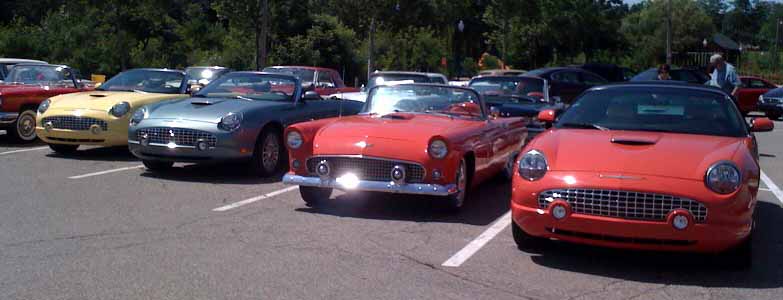
What follows is a condensed version of one of my first ethnographical projects concerning the relationship between women and cars. I focused on the Ford Thunderbird as it provided the opportunity to compare women’s involvement with older vehicles with that of more contemporary cars. Many of the lessons learned conducting this research were helpful in future women and car investigations.
A number of years ago, in an effort to remedy the lack of scholarship devoted to women and car culture, I began my own inquiry into woman’s relationship with the automobile. I began by investigating how contemporary women have appropriated a particular segment of the automotive market, a type of automobile referred to somewhat pejoratively in the media as the ‘chick car.’ In ‘The Evolution of the Chick Car,’ I examine how certain groups of women have rejected the prescriptive and gendered ‘mom’ car in favor of an automobile that is quick, sporty, stylish and fun to drive. In order to find ‘chicks’ to interview about the experience, I posted requests for participation on Internet car groups. The enthusiastic response from chick car owners led to my master’s degree project, which was to uncover women’s participation in car culture through membership in online car forums, bulletin boards, and mailing lists. Through participant-observation, as well as the administration and collection of 100 individual surveys, I not only constructed a fascinating portrait of the contemporary female car enthusiast, but also discovered the myriad of ways in which women use the Internet to participate in car culture. Car culture, traditionally identified with masculinity and male experience, has historically discouraged and silenced women’s participation. Yet as I discovered, cyberspace often provides female car enthusiasts with a non-threatening environment in which to talk and learn about cars.
‘Chick car’ ownership represents only one example of women’s engagement with the automobile. Each summer in southeastern Michigan, thousands of classic car owners take part in car shows and cruises all over the state. Women are not only observers of these automotive events, but many also actively participate as car owners and through membership in classic car clubs. Thus classic car culture represents an additional location in which to investigate women’s relationship to the automobile.
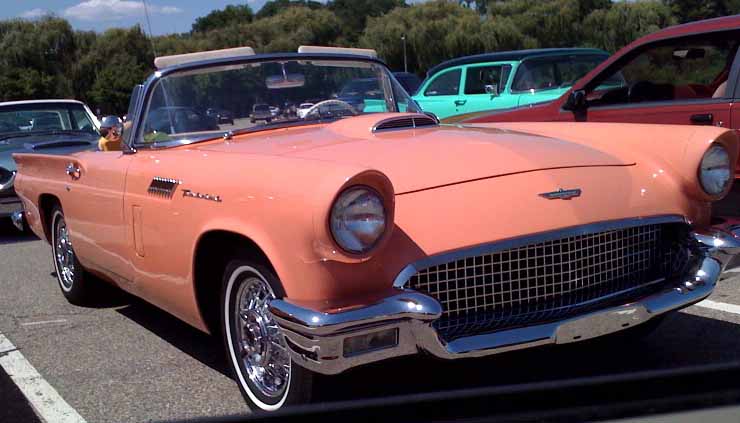
However, the experience of driving and owning a classic car differs considerably from that of a contemporary vehicle. The classic car is not purchased because it is practical, efficient or ‘fun to drive.’ Rather, classic car ownership is often based on nostalgia for a bygone era, or as link to a person or experience from the past. Therefore, as I began my inquiry, I became interested in how the meanings women ascribe to the classic car compare to those attributed to contemporary automobiles. I also wondered whether female classic car owners would use the Internet with the same intensity and enthusiasm as ‘chick’ car owners, or if practical and social conditions would discourage them from embracing cyberspace. I contemplated, therefore, whether women’s acceptance or reluctance to use Internet technology is dependent on the age of the user or the degree of familiarity with the medium, or if it is, in fact, influenced by the cultural and gendered prescriptions of the era in which the car was produced. Therefore, in order to examine women’s participation in classic car culture, I found it necessary to conduct research both online and offline. My offline research not only provided information regarding women’s participation in classic car culture, but also informed both women’s rejection of and participation in online classic car groups.
The three websites utilized by members of the Water Wonderland Thunderbird Club provide tremendous insight into woman’s relationship with the automobile as well as woman’s role in classic car culture. While the WWTC’s home site is not interactive, its structure and content strongly suggest that the primary function of the club is social. The website serves as a central information center for the listing of WWTC events. The newsletters attached to the site are filled with reports of such events accompanied by photographs of members enjoying automobile-related activities, as well as personal car stories from the readership. Offline observation of club gatherings confirmed the importance of friendship and community to WWTC members. Tbird owners participate in car shows and cruises and most often, they attend these events together. At car shows, there is often a group of Thunderbirds parked alongside one another with the owners seated behind them. In these settings, the club members often arrange themselves by gender rather than relationship. At cruises, members often tour together, and congregate at a specified location afterward. The club is composed of over 120 families, primarily husbands and wives whose social lives revolve around a shared interest in the classic Thunderbird. While a few of the female club members own and drive their own cars, the majority participate in cruises and tours as passengers. Women may appreciate the history and style of the classic automobile, but for the most part, they leave the driving and maintenance to their husbands.
During the post World War II era, women were relegated to the domestic sphere and dissuaded from driving. While arguments suggested women were too ‘fragile’ to take on mechanical matters, the most likely reason for such discouragement concerned issues of power and gender. As Berger reflects, ‘mastery of the automobile would mean that women’s dependence on men would be lessened’ (260). Jokes concerning the ‘woman driver’ became popular during this period as a way to denigrate women’s driving ability. While it is unlikely that male WWTC members feel their wives are incompetent drivers, their insistence on taking the wheel suggests that issues of power and gender remain.
Women who grew up with an interest in cars are more likely to drive them and have an understanding and appreciation of the automobile that goes beyond the sheet metal. It could be assumed, therefore, that such female car enthusiasts would eagerly and easily utilize technical forums on websites such as the Vintage Thunderbird Club International. Participation on VTCI is predicated on automotive knowledge and technical experience. There is little patience for individuals who ask questions that do not display a basic level of understanding of Thunderbird maintenance and restoration. Women, in particular, must earn the respect of forum moderators and other contributors before they are taken seriously. However, once Thunderbird expertise is acknowledged, women post more regularly and authoritatively, not only asking questions, but answering those of others as well.
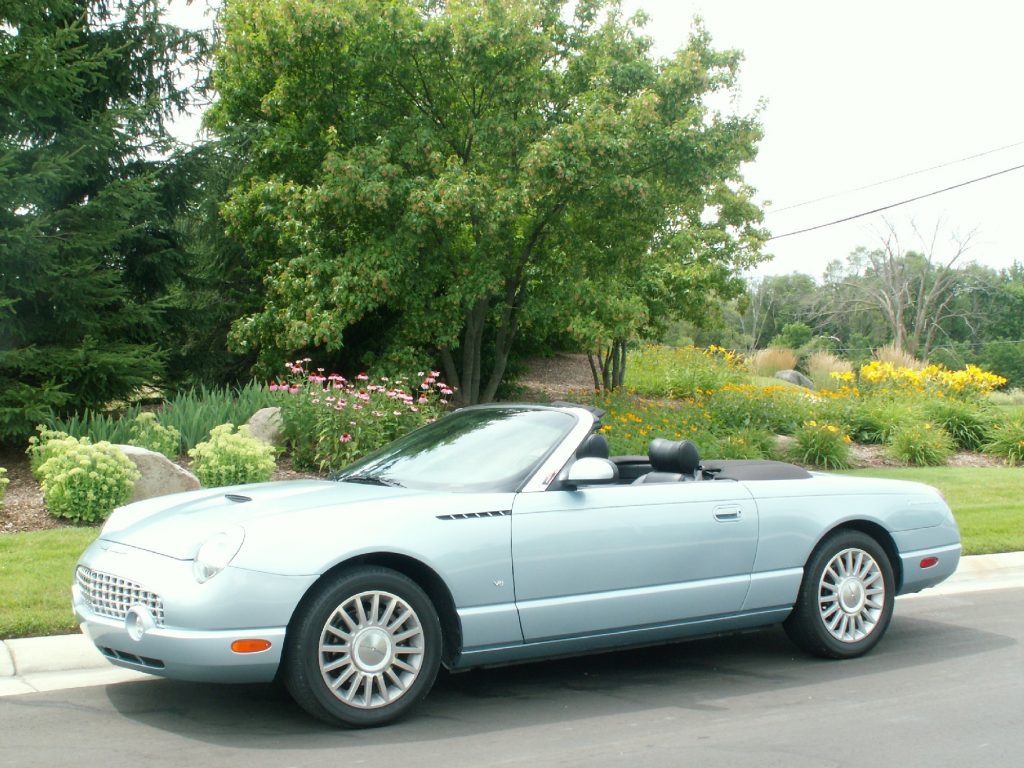
While female contributors must display automotive knowledge before gaining acceptance on VTCI, many of them call upon gender displays in order to become accepted on the male dominated forums. Female VTCI contributors make liberal use of the emoticon, exclamation point, ‘xoxo,’ and offer repeated ‘thank yous’ when conversing with male posters. Such conversational and textual motifs not only convey gender, specifically femininity, but their use indicates deference and respect to the dominant male ‘expert’ presence. As Shayla Stern suggests in her discussion of instant messaging in Instant Identity, ‘despite its potential to empower girls and counteract dominant social forces that have been in place through history, IM communication does not take place within a cultural vacuum that disregards traditional gender roles and behaviors’ (113). Stern’s words are relevant not only to the IM communication of adolescent girls, but to all locations in which women must confront cultural prescriptions of masculinity and gender roles. Online car groups and forums certainly qualify as such spaces.
There are a number of women in the Water Wonderland Thunderbird Club with past experience in driving, repairing and restoring automobiles. However, those I interviewed with ‘classic’ Tbirds do not utilize websites such as VTCI as a source of technical information. Rather, these capable women have acquiesced the responsibility for restoration and repair to their husbands. As WWTC member Teri B. told me, ‘I thankfully do not need the internet for information. My husband is the mechanic.’ Terri M., the VTCI Publications Director, confirmed this observation. She asserts, ‘Most women do not restore or work on their Birds and most do not own classic/vintage by themselves but with a male partner that does all of the work!’
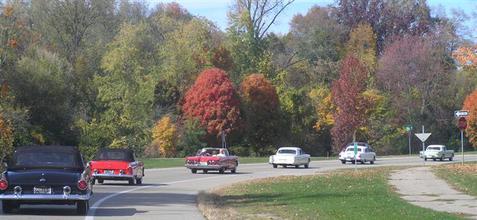
While many of the female WWTC members hold positions of responsibility in the work place, when engaged in club activities, they often revert to the gendered roles of the 1950s and early 1960s, the era in which the ‘classic’ Thunderbirds were produced. During the ‘golden age’ of American car culture, women’s role, both in the car and in the home, was of a supportive passenger. Female WWTC members often take on this gendered, caretaker position. They prepare the food for the club picnic. They organize WWTC activities. They are very active in the club, but primarily in supporting roles. While Marie B. shares club membership responsibilities with her husband, as she told me, ‘[he] has lots of great ideas to increase membership, and I get to do the work.”’
My initial impression was that female WWTC members did not take advantage of Internet car forums because, as women in their 50s and 60s, they might be uncomfortable and unfamiliar with computer technology. While this may certainly be a contributing factor, I discovered that many of the women with solid computer skills remained dependent on male club members rather than online experts to address classic car issues. It is also possible that many of them find the masculine online technical forum hostile, and therefore call upon individuals they know and trust for classic car information. However, women who participated in car culture during the 1950s and 60s as drivers and mechanics were in many ways exceptional, as they no doubt had to withstand a good deal of harassment and discrimination in order to become successful in what were considered masculine endeavors. It is surprising, therefore, that many now grant men the power to determine not only if they will be driving, but also, where they will be going.
This is not to say that classic Thunderbirds hold little meaning for the women who own and drive them. For many WWTC members, the Thunderbird is a container for memories of past experiences. Others view the Tbird as an important piece of Detroit automotive history. Some value the automobile as an icon of classic car design. As Marie B. exclaims, ‘classic cars are like works of art!’ Yet few see the automobile as a symbol of their own independence. Rather, for many WWTC women, the Thunderbird is the means to an expansive and crucial social life; it is an object that, literally and figuratively, holds marriages together. Ironically, I only encountered one instance of ‘driving as empowerment,’ expressed by Mary F., who has taken over the wheel of the Thunderbird after her husband’s death. As she told me, ‘I’m proud of my car and proud of me, a 68-year-old woman.’
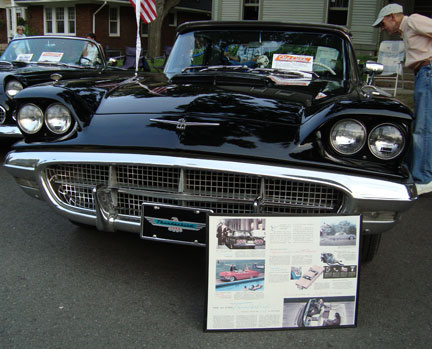
While the women of WWTC who own ‘classic’ Tbirds refrain from logging on to the VTCI, retro bird drivers are active on the Thunderbird Nest. WWTC member Joanne C. logs on almost daily, and she is joined online by hundreds of other female retro bird owners. The majority of women who participate on the Nest do not work on their cars, but they are proactive in making sure the cars are running properly. The Nest serves as an important source of technical information for retro bird owners; it keeps them up to date on current problems and provides resources for repair and service. While the website serves as a technical resource, its primary function is social, indicated by the large number of non-automotive forums. The variety of topics and their usage suggests that in many ways, the Thunderbird Nest mimics the function of an offline club, as it provides technical help, announces events of interest to its members, and has an active and important social function. Like the WWTC, the Nest brings together those who share an interest in a particular model of car.
However, unlike the majority of women who belong to the WWTC, the women who participate on the Thunderbird Nest are in the driver’s seat. They take part in car culture through touring, cruising and showing. Many get online simply to share love of the car with fellow retro bird owners. I did not sense any elitism on the part of those with more technical and mechanical knowledge, nor were those whose questions revealed a relative lack of expertise made to feel embarrassed or naïve. Unlike the VTCI forum, there is little condensation to less experienced owners, and all participants are treated with respect. Those who do post acrimoniously are quickly admonished, albeit in a polite and humorous way. I also noticed that there are a few women on the Thunderbird Nest who have a great amount of Tbird knowledge and experience, and they are held in high esteem. And while there is good-natured joking between men and women, there is little evidence of overt sexism or unequal treatment in the forums.
In many respects, the Nest is representative of many online car groups in which women are active participants. The women who own retro birds are not unlike the chick car owners of my previous research. They participate online to gather automotive knowledge and technical information, to learn about regional and national retro bird clubs and events, and perhaps most important, to form and maintain friendships based on a shared interest and affection for a particular automobile. The Thunderbird Nest is not a hostile nor gendered space for female car enthusiasts. Rather, it empowers women to take control of the wheel, which suggests they have taken control of their own lives as well. As Gajjala tells us, ‘What cyberfeminists share is the belief that women should take control of and appropriate the use of Internet technologies in an attempt to empower themselves’ (81).
The remarkable difference in online participation between female classic Thunderbird owners and owners of retro birds cannot be explained by age or technological capability alone. My original expectation when embarking on this project was that women had reclaimed the classic Tbird, a symbol of 1950s and 60s masculinity, as their own. While many of the women now own the Thunderbird they longed for as teenagers, they are still unable or unwilling to drive it themselves. Rather, they succumb to the gendered expectations of an earlier era as a means to an active social life and stronger marriage, and hand over the wheel to their husbands. The results from this brief ethnographic study suggest that women’s participation in classic car culture is influenced not only by the car they own, but the era in which the car was produced as well.
Women’s relationship with the automobile has not been a subject of significant feminist or historical research. Therefore, in order to construct or imagine women’s car culture role in previous eras, secondary sources such as advertisements, car manuals and personal narratives are of extreme importance. Classic car clubs provide an additional opportunity to investigate women’s participation during specific periods in US automotive history. Most classic car owners, male and female alike, were influenced by the automobile during childhood and adolescence. Thus, classic car events and online forums provide a unique yet temporal glance at car culture during a specific period in American cultural history, as they offer insight not only into car culture, but the gender roles and cultural prescriptions that accompanied it.
Berger, Michael. “Women Drivers! The Emergence of Folklore and Stereotypic Opinions Concerning Feminine Automotive Behavior” in Women’s Studies International Forum. 1986: 9(3), 257 – 263.
Gajjala, Radhika. Cyber Selves: Feminist Ethnographies of South Asian Women. Walnut Creek: AltaMira Press, 2004.
Stern, Shayla Thiel. Instant Identity: Adolescent Girls and the World of Instant Messaging. New York: Peter Lang, 2007.